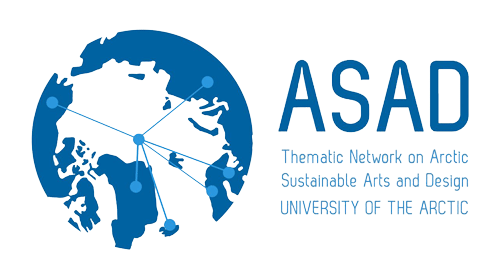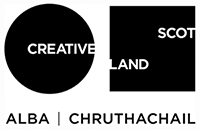Cold War Histories and Nuclear Futures
NORTHERN EXCHANGE
During August 2016 this project brought together artists, lecturers and students from three universities in the ASAD network: Iceland Academy of Arts, the University of Lapland and the University of the Highlands and Islands. We worked with the artists Ásthildur Björg Jónsdóttir and Elina Härkönen, our students, teachers and local communities. Professor Timo Jokela, Dean of Art and Design at the University of Lapland also joined us.
HOLD YOUR CURSOR OVER THE PHOTOGRAPH TO PAUSE THE SLIDESHOW

We explored the Cold War period by using a combination of approaches to re-imagine this period and ask how the presence of Cold War military installations impact on the population in both past and present. We visited communities near where radar stations were sited during both the Cold War period and more recent times, including Höfn, Keflavík, Bolungarvik and Þórshöfn.
From a pedagogical perspective the project considered the potential for place-based art education to generate a sense of place and attachment. This form of pedagogy focuses on particular places as a way to learn and experience the world around us. We considered how place based methods can help us reveal memories linked to this period of secrecy and paranoia and gain understanding of our nuclear future.
We hope to encourage a different understanding of the remote North by looking at Iceland’s role in the Cold War. As part of NATO’s network of radar defence systems, Iceland along with neighbouring communities in the northern and Arctic region, occupy a special place in the story of the Cold War, playing a significant role in NATO’s system of defence against the perceived Soviet threat during this period. These communities hosted early warning radar stations that formed part of NATO’s extensive early warning defence system across North America and Europe.
Today some commentators predict a second ‘Cold War’. It is therefore timely to address subject matter related to the Cold War while those who lived through it can give firsthand accounts of their perceptions and experience so that they can be collected, preserved and shared with younger generations. In turn these accounts can inform perceptions of our nuclear futures. The project brought together artists and students with volunteer participants. Together we represented different generations of people who live and work in remote communities that hold historic significance as a new Front Line for defence in the second half of the 20th century.

Project Participants include:
Members of the Icelandic communities in Vestfirðir, Keflavík, Höfn and
Þórshöfn.
In-service teachers in Westfjords
Students:
Venni Ahlberg
University of Lapland
Rebecca Boyd,
Moray College University of the Highlands and Islands
Anu Corin,
University of Lapland
Elizabeth Crichton,
Moray College University of the Highlands and Islands
Dagrún Magnúsdóttir, Iceland Academy of Arts
Valerie Gemkow,
University of Lapland
Iiris Perkkiö, University of Lapland
Elín Sveinsdóttir,
Iceland Academy of Arts




We traveled to Vestfirðir, Keflavík, Höfn and Þórshöfn / Langanes. We took a small, mobile geodesic dome to each place to help explore the legacy of the Cold War and the question of our nuclear futures. In each place we invited members of the public to join us to erect the dome. A dome is used for NATO radar installations, often forming a local landmark. It is familiar to communities throughout the Northern and Arctic regions and thus creates a shared point of reference.
Everyone was welcome. We were able to think and talk, draw and write, while we built the dome. We used glow in the dark paint, UV torches and ink that is only visible under UV light. We used these to make graffiti on the triangles that form the roof of the dome.
This dome symbolically makes visible the memories and perceptions we collected about the Cold War installations that were near these communities. In November 2016 we took it Shetland to share publicly these recollections and forecasts for the future. Here we will also collect memories and future thoughts to merge as a collective voice from these remote communities linked through the Cold War.
The project began with an in-service workshop in Vestfirðir for teachers and student teachers which investigated strategies drawn from place-based education and socially engaged art practices.
Subsequently we invited members of the general public, teachers, student teachers and artists to join us in each location to look at ways the presence of NATO and Cold War military installations effect identities and perceptions of the global community.
The project took place from 6th to 28th August 2016 at the following locations:
Ísafjörður We were here on 8, 9, 10 and 11 August.
Höfn On 14, 15 and 16 August we were in Höfn.
Þórshöfn We visited Langanes, staying in Þórshöfn on 17, 18 and 19 August.
Keflavík We were in Keflavík on 13th August and again during the week of 22nd August.
For further information please contact us through the contact page on this web site or email: coldwarprojects@gmail.com
SMS message to: +1 484 557 7354
The project was supported by The Carnegie Trust, Iceland Academy of Arts (Reykjavik, Iceland), University of Lapland (Rovaniemi, Finland), University of the Highlands and Islands (Scotland), Creative Scotland and Shetland Arts Development Agency.






